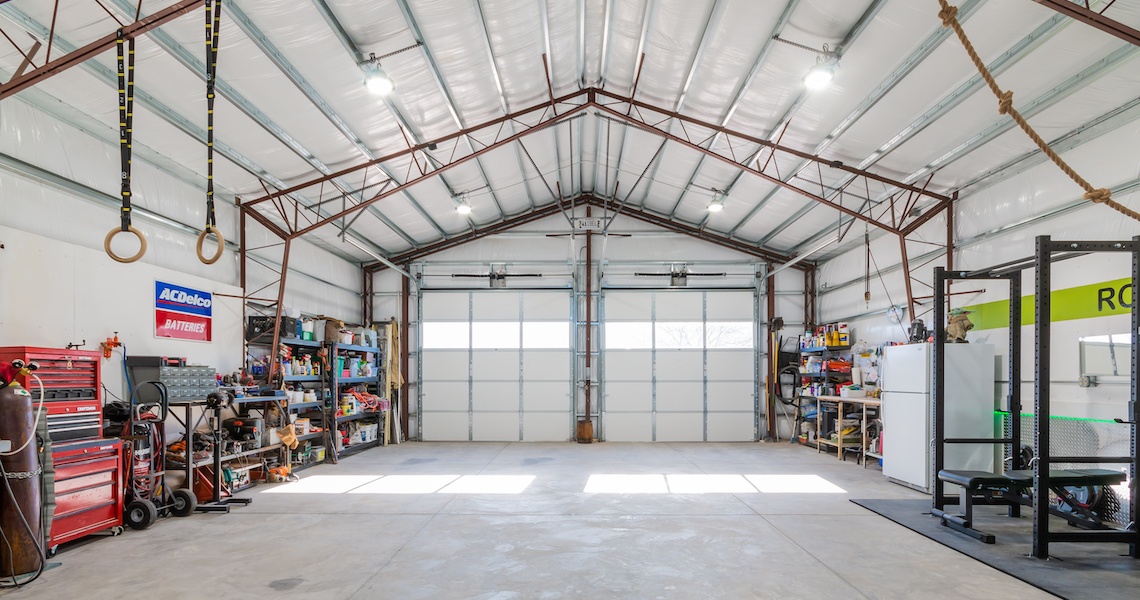Impact of Steel Tariffs: What It Means for Your Next Building Project

Steel prices are back in the headlines. Unfortunately, it’s not for the reasons most builders and homeowners were hoping. In June 2025, the Trump Administration announced a sweeping increase in steel and aluminum tariffs, raising import taxes by up to 50%. This latest development in U.S. trade is making waves across the construction industry, from commercial developers to residential DIY builders.
If you’re planning a build in the next 12–24 months, understanding the impact of higher tariffs is crucial. From the rising cost of steel buildings to shifting supply chains, these economic changes can have a direct effect on your project timeline and budget. The good news? Working with an American manufacturer like Worldwide Steel Buildings helps you sidestep many of these disruptions, offering stability, transparency, and long-term value in uncertain times.
What Are the Steel Tariffs in 2025?
To start, let’s clarify what these tariffs are. A tariff is essentially a tax placed on imported goods. Governments use them to protect local industries by making foreign products more expensive and less competitive. In the case of steel and aluminum, tariffs aim to boost domestic production, encourage job growth, and reduce dependency on imports of steel and aluminum from foreign suppliers that may undercut U.S. industries.
Following a recent policy update in mid-2025, the White House announced a 50% tariff increase on a broad range of steel products and aluminum imports. President Trump implemented these new tariffs under an expansion of Section 232. They are justified on the grounds of national security, protecting the American steel and aluminum industries from dumping practices and market manipulation abroad.
So what does this include?
- Raw steel beams
- Pre-fabricated metal components
- Finished steel framing
- Various aluminum production inputs
These higher tariffs apply to U.S. imports from international trade partners, including some countries that were previously given exemptions. The goal is to encourage U.S. buyers to source their steel and aluminum needs from domestic production. However, this trade policy has ripple effects, creating unintended consequences on domestic builders, contractors, manufacturers, and individual buyers who are part of a globally connected economy.
Those most affected include:
- Foreign producers now facing steep U.S. barriers
- Importers and distributors that rely on overseas materials
- Manufacturers that utilize global supply chains are navigating a more restricted global market
- Builders and buyers who absorb the downstream price increases
While these policies aim to benefit American industries, they pose significant challenges for anyone involved in new construction, especially when attempting to predict budgets and material availability.
How Do Tariffs Affect Building Material Prices?
The most immediate effect of higher import tariffs is a price spike for imported steel. But that’s just the beginning. Even American-made steel buildings, such as those offered by Worldwide Steel Buildings, are influenced by these market shifts.
Here’s how the ripple effect works:
- Imported steel becomes more expensive, shrinking the available supply.
- Demand for domestic steel rises sharply as buyers shift their focus to local production.
- U.S. steel mills and steelmakers increase prices to reflect higher demand and limited capacity.
- Increased costs hit suppliers, contractors, and ultimately the end user.
It’s important to understand that even if you’re not directly purchasing foreign steel, these higher tariffs impact the overall pricing environment. A 2025 report from SteelCo Buildings noted that the average per-ton cost of construction-grade steel has increased by more than 20% in the last year, following the U.S. tariff expansion.
But the volatility isn’t limited to steel. Other building materials are also being squeezed:
- Wood remains expensive, primarily due to persistent supply chain issues and high demand for housing following the pandemic.
- Container-based construction has surged in popularity, but shipping container prices have also climbed, driven by higher prices and international trade delays.
- Aluminum tariffs have driven up prices in roofing, siding, and structural components, affecting even hybrid builds.
It’s also critical for customers to understand that the total cost of a steel building includes more than just framing and panels. Tariffs and material inflation affect items like windows, doors, insulation, and hardware, components that often involve aluminum or imported parts. These added expenses can increase the final price, especially when combined with rising labor and shipping costs.
While Worldwide Steel Buildings maintains control over its domestically sourced framing and core materials, we do not directly set prices for these third-party components. Unfortunately, this can result in sticker shock for buyers who weren’t expecting the total cost to add up during the final budgeting process. That’s why we encourage early conversations and realistic planning, so there are no surprises when your comprehensive project quote is finalized.
This broader inflation in building material prices puts pressure on budgets, especially for builders working on tight margins or fixed-bid contracts. With all major materials under pressure, the overall cost of construction continues to climb. Choosing a transparent, factory-direct manufacturer like Worldwide Steel can help you plan more accurately and avoid unexpected hurdles later in the process.
Why American-Made Steel Still Makes Sense
With so much pricing turbulence, why does it still make sense to invest in steel, especially when compared to other options? The answer lies in where and how you source your materials.
At Worldwide Steel Buildings, we manufacture our framing systems using 100% U.S.-sourced steel. That means:
- No exposure to higher tariffs
- No delays from overseas shipping or customs holdups
- No last-minute cost changes due to global trade disputes and policy changes
We operate with a factory-direct model, giving you greater transparency and control throughout the building process. Our domestic supply chain isn’t just a selling point. It’s a strategic advantage in today’s economic environment.
Beyond economics, there are tangible benefits to choosing American-made steel:
- Reliable lead times: With materials sourced and produced domestically, we avoid waiting for shipments stuck in international ports.
- Support for U.S. jobs and communities: Every building purchased helps fuel the American manufacturing industry and steel mills.
- Environmental stewardship: The U.S. steel industry adheres to stricter environmental regulations than many of its global competitors.
- Stability despite ongoing shifts in international trade: As global supply chains become increasingly unpredictable due to higher tariffs and geopolitical tensions, sourcing materials domestically ensures more reliable timelines and fewer unexpected cost fluctuations.
By working with a company like Worldwide Steel, you’re not only safeguarding your project against cost volatility, you’re also investing in quality and resilience.
Steel vs. Wood in 2025: Rethinking Value
Many builders have long defaulted to wood for its lower upfront cost. But that calculation is shifting. In 2025, the cost of steel buildings and wood-frame structures is often more comparable than ever before, and steel is increasingly proving its worth as the smarter long-term investment.
Here’s why:
1. Durability and Longevity
Steel structures are resistant to mold, termites, fire, and rot. They don’t warp with humidity or shrink over time. In contrast, wood-framed buildings often require frequent repairs, replacements, and pest treatments.
2. Lower Insurance Premiums
Due to its resilience against wind, water, and fire, steel is considered a safer building material by insurers. Many commercial and residential owners see lower monthly premiums on steel buildings compared to wood-frame alternatives.
3. Sustainability
Modern steel is recyclable, and many American mills now use electric arc furnaces for cleaner production. This reduces the carbon footprint of your build, especially compared to lumber that relies heavily on deforestation
4. Minimal Maintenance
Painted or coated steel framing doesn’t require regular staining or sealing. Over time, that means you’ll save money and spend less effort on upkeep.
As reported in an Aegis Metal article, more project owners are opting for steel because it delivers more durability and fewer headaches, particularly in regions prone to extreme weather or seismic activity. Steel remains the most cost-effective long-term building material, even with tariff-related pressures and an unpredictable global market.
What This Means for Your Next Building Project
If you’re planning a project for late 2025 or 2026, here’s the bottom line: acting sooner is better. Material costs are unlikely to go down anytime soon, and with trade policy constantly evolving, higher tariffs on steel buildings could be on the horizon.
Here’s what we recommend at Worldwide Steel Buildings:
• Lock in pricing now.
Our team can help you secure a quote that reflects today’s material rates before they shift again. Thanks to our in-house manufacturing, we offer pricing stability that many competitors can’t match.
• Start with our 3D Building Designer.
This free tool allows you to customize the size, layout, and features of your structure in real-time. You’ll get an instant sense of design possibilities without committing to anything upfront.
• Ask about in-stock specials.
We frequently offer special pricing on popular sizes and configurations made from our existing inventory of domestic steel. These are a great way to save without compromising on quality.
• Talk to a real expert.
Our team is 100% U.S.-based and ready to walk you through every phase of the planning process. Whether you’re building a commercial storage facility, garage, airplane hangar, or custom barndominium, we’ve got you covered.
Don’t wait for prices to rise again. We’re here to help you beat the price hikes and get a structure that lasts. Acting today could mean thousands saved tomorrow.
Final Thoughts: Navigating 2025 with Confidence
Yes, the impact of steel tariffs is real, and it’s reshaping the construction industry. But that doesn’t mean you’re at the mercy of international trade policy. With a proactive approach, a solid strategy, and the right partners, you can move forward with confidence without blowing your budget.
At Worldwide Steel Buildings, we believe in transparency, especially when it comes to cost. We give you the competitive edge through:
- U.S.-based sourcing that avoids the volatility of global steel imports
- Benefit from access to high-quality American-made materials unaffected by international trade uncertainty.
- Transparent pricing—even amid higher tariffs and increased costs
- Gain peace of mind with a team committed to your long-term success
From imported fixtures to finish materials, trade policy and global market conditions touch nearly every part of a building project.
Working with Worldwide Steel means you’ll have a partner who helps you prepare, not just build. We provide detailed quotes, upfront conversations, and expert guidance to help you understand the entire picture so that you can move forward with confidence and without surprises.
Ready to take the next step?
Browse our steel building kit options or contact our team directly to secure your price before the next market shift. Let us help you build a durable, American-made structure, without any surprises.
